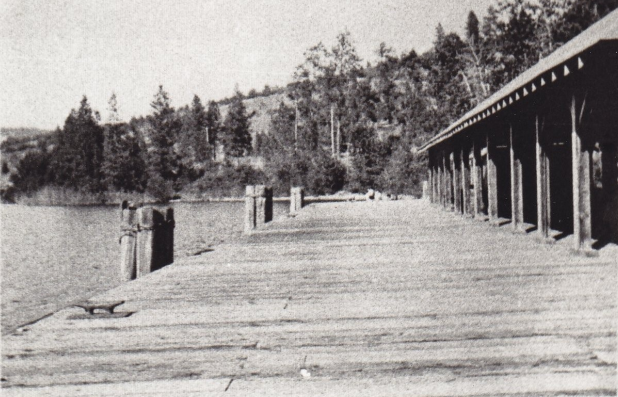For the first three decades of the twentieth century, Okanagan Centre was the commercial hub of the area. From the late 1800s to the 1930s, Okanagan Centre was one of the main points for the Central Okanagan. From the Okanagan Centre Wharf goods such as apples, pears, and cattle were shipped to the Railyard at Okanagan Landing. From the Okanagan Landing goods were shipped all over the world. Dry goods, manufactured items and new settlers all arrived at the Okanagan Centre Wharf.
In 1892 Vincent and Homer Maddock purchased thousands of acres of land at the auction in Vernon. A section of the land they purchased would become Okanagan Centre. The land purchased by the Maddocks was subdivided into orchard sized plots. The Maddocks built an irrigation system to deliver water to the orchard land. The remaining land was subdivided into townsite lots. The Maddocks sold their property in 1909 to the Okanagan Valley land Company.
Over the years Okanagan Centre continued to develop. By 1910 the town had two hotels, a general merchant, a Chinese laundry, and a “red-light district.” In the new church, a school was opened for the children of the local farmers. Development was beginning for the packing house and cannery.
In 1925 the National Railway connected Vernon to Kelowna, causing an increase in commerce and immigration to Okanagan Centre. Over time the transportation corridor shifted from Okanagan Lake to the railway. Motorways were also starting to develop which increased transportation by automobile within the valley. The National Railway and the new motorways meant that the commercial use of sternwheelers and freight barges began to decrease.
This material may not be reproduced for commercial purposes, unless written permission is obtained from the Lake Country Museum & Archives. In all cases, when you reproduce this material we ask that you acknowledge the copyright ownership and the source of the material as follows: “Reproduced with permission from the Lake Country Museum & Archives website.”








Ian Pooley
The Canadian National’s line from Vernon to Kelowna didn’t lead to a decline in barge traffic; in fact it increased, with the new CNR barge service competing with the CPR barge service. There was, however, a decline in barge traffic on the northern half of the lake, since CPR barges were now mostly routed out of Kelowna instead of Okanagan Landing.